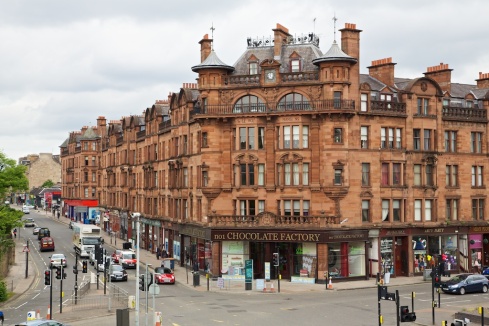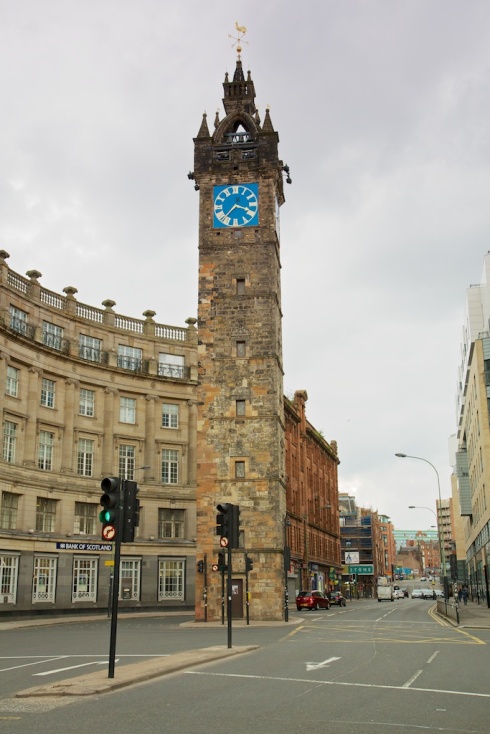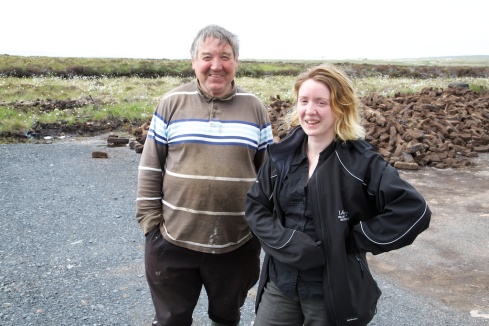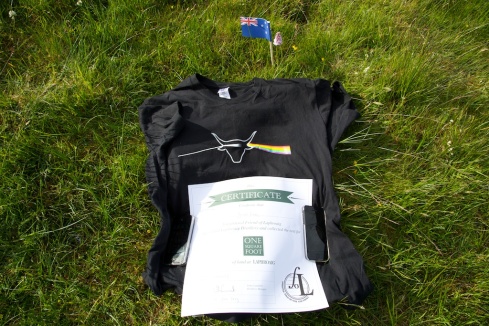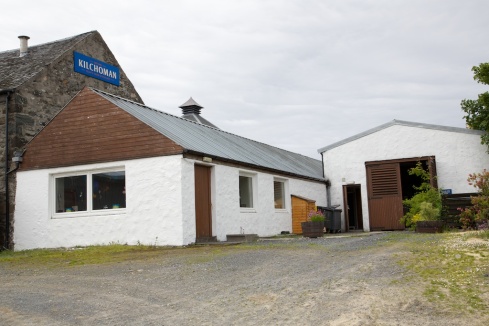What a crammed week! As usual I will try to provide some context before letting the photos take over.
Our assignment in Wales came to a successful conclusion on Sunday 9th June. Lisa got back safe and well on Saturday evening as planned and seemed very pleased with how we had done with everything. Another happy customer!
We got away on Sunday at 09h45 after seeing the geese and the goslings for the last time and having a pat with the dogs. The weather was windy and cold. We took the route through Crickhowell and stopped for a medicinal coffee in Abergavenny. Already taken paracetamol and Voltaren but not feeling any better. Caught the delicious smells of a roast bap window on the street and had a brunch snack. Then headed to Tredegar House. By now we had blue skies and it was nice and warm. Tredegar House is promoted as one of the architectural wonders of Wales and one of the most significant late 17th-century houses in the whole of the British Isles.
Got to our accommodation in Bristol, Malago Guest House, at 16h15. For the next few days we were going to be touring together with Leanne’s Mum and Dad, G&Z. Their hotel was only ~2km away so we walked to their place and then into the old city via Queens Park.
On Monday morning, Leanne bought sandwiches at the Tesco Express near the hotel to have for lunch. We met G&Z at their hotel at 10h00. Got away about 10h25 and went to Bourton-on-the-Water. Spent an hour there then moved on to Charlecote House. Had a picnic near the front of the house before going through it in detail. The gardens were good too. Got to the pub/accommodation near Stratford-on-Avon at about 17h00 and stayed in for dinner. I finally remembered to check my FaceBook page for the first time in weeks. I actually don’t use it anymore. My blog postings get automatically notified on my FaceBook page but that is all I have it for now. I even deleted most of my content from it a few months ago. What I found there however were some comments on earlier posts that I had never seen. Sorry about the delay in acknowledging those. Going forward please use the comment facility on my blog site for any comments, questions and remarks. It has the added advantage of keeping the feedback with the relevant post. Thanks.
Tuesday – left the pub at near 10h00. Weather was windy & cold and looked like rain. Went into Stratford-on-Avon in G&Z’s car. Started teaching them how to use the satnav. Got some fine rain during our two hours walkabout. Our next stop was Baddesley Clinton. We got there at 13h00 and went directly into the house. The National Trust staff were great as usual. This house dates from the 15th century. After a cup of tea and a biscuit we set the satnav for Anne Hathaway’s Cottage. Just took a few photos from the outside then headed back to the pub for a beer.
On Wednesday we set off at about 10h00 for Kedleston. We set G&Z the task to get there by themselves using the satnav and Leanne & I went into Costa in Stratford to get a coffee. They beat us to Kedleston by 5 minutes and didn’t have any real problems. Kedleston was amazing. To quote the NT app… “Take a trip back in time to the 1760s at this spectacular Neo-classical mansion framed by historic parkland. Designed for lavish entertaining and displaying an extensive collection of paintings, sculpture and original furnishings, Kedleston is a stunning example of the work of architect Robert Adam. The Curzon family have lived here since the 12th-century and continue to live at the Hall. Lord Curzon’s Eastern Museum is a treasure trove of fascinating objects acquired on his travels in Asia and while Viceroy of India (1899 to 1905). The Hall was used as a key location for ‘The Duchess’, the recent Hollywood blockbuster.”
From there we went to Batley and walked up and down the street, Grange Road, where Leanne’s grandfather was born according to his birth certificate and even chatted to some locals. Across the road you can see the old mill buildings. You could imagine how oppressive it might have been in the late 18th and early 19th centuries. Went in to the town as well and had a walk around before getting to the hotel at about 18h00.
Thursday was our last morning with G&Z. We went to the Dewsbury Town Hall, near Batley, for a quick look. This is where Leanne’s Grandfather’s birth was probably registered. We took some photos and then it was time to say farewell.
We went on to Fountains Abbey. Got there at 12h45, just in time for a 75 minute guided tour starting at 13h00 with Sam. He was very good as we find with all the NT staff – passionate, knowledgable and engaging. After the tour we walked around the water garden and back to the water mill. On the way back we were practically accosted in the middle of the path by Tony. As he almost rushed towards us he was apologising for the weather! Then he poured out a number of interesting bits of information about the property. It was hard to get away from him politely. He certainly was enjoying his job. We had a cup of tea before finally getting on the road at 16h45. The drive to Abington, near Glasgow was uneventful and we arrived at 19h25.
The weather on Friday was overcast, cold and windy with a few spots of rain – not enough to put the wipers on for though. Left the hotel at 09h00 and went straight to a Tesco near Glasgow to stock up and get diesel. Left the Glasgow area at 11h00 and had a very nice drive up Loch Lomond stopping many times for photos. Spent some time at Luss where we found a number of Colquhoun headstones in the church graveyard. Turns out that this is relevant to Jodi! Small world.
We got to Tarbert just before 17h00 but there was nobody at the reception of the place we were booked at. Leanne rang and a French guy arrived ten minutes later apologising and explaining that due to an electrical fire a week ago the hotel was closed. He had arranged for us to stay at another B&B in town called Dunivaig but was vague on the costs. So we headed off there to see what the damage was. Turned out to be the same price, £70 including a full breakfast. I don’t know why we could not have been informed of all this in advance but as it turned out Dunivaig was probably a much better place.
Saturday morning was all about getting to the ferry on time, which we did without bother. We meet another pair of travellers at the B&B, Chris & Sue, who were also heading to Islay. Chatting to them for the entire crossing keep our attention off the rain, wind and waves. Most of the trip is in sheltered waters so there was very little rocking and rolling. The crossing is about two hours and by noon we were motoring to the first distillery, Caol Ila, only ten minutes up the road. The weather had improved out of sight so we sought out another distillery, Bunnahabhain, which unfortunately was only open Monday to Friday. So we headed off to find our B&B at Portnahaven. Finally got to Portnahaven at 16h30. Found that we had been upgraded to an ensuite room with a nice view over the harbour. Excellent! Spent some time settling in then went three doors down to the pub for dinner. After that I went out taking sunset photos till 22h15.
The weather was quite nice on Sunday morning so we went for a walk around the foreshore. Found lots of different wildflowers along the coast including sea thrift and a small orchid. We finally left at close to noon and had a couple of photo stops on the way to Lagavulin. Did the tour for free because of the ‘passport’ we got yesterday at Caol Ila. It was only us on the 14h30 tour and by the time we finished the tasting it was 16h30. The glasses were free to keep. Nice. Went up the road to take a couple of photos before Leanne drove us back.

Some of the gardens at Tredegar House.

Tredegar House is a 17th-century Charles II country house mansion in the city of Newport. Described as “The grandest and most exuberant country house” in Monmouthshire and one of the “outstanding houses of the Restoration period in the whole of Britain”, the mansion stands in the 90 acre (360,000 m²) Tredegar Park. It became a Grade I listed building on 3 March 1952. http://en.wikipedia.org/wiki/Tredegar_House

The stable block at Tredegar House.

Some fine wood carving above the fireplace in the dining hall at Tredegar House.

The featherless shield on the front of the head gave rise to the expression “as bald as a coot,” which the Oxford English Dictionary cites in use as early as 1430. The feet look a bit unusual as well.

A snapshot out the car window using an iPhone as we crossed the Severn Bridge out of Wales.

Apartments in Bristol. Hmmmm.

Apartments and boats along the harbour in central Bristol.

We got really lucky at dinner time in Bristol. We chose petty much at random and ended up in this gorgeous pub which also had a very good value set menu. Just what we needed.

Leanne and I had visited Bourton-on-the-Water in the late 1980s. Not the best of weather for our return visit with Leanne’s Mum & Dad but at least it wasn’t raining.

Leanne’s favourite type of old car, any model of Morris Minor. This one is a ‘Morris Traveller’ and it looked to be from The Netherlands.

Not far from the Morris Traveller was this Mini.

The gatehouse. Charlecote Park is a grand 16th century country house, surrounded by its own deer park, on the banks of the River Avon near Wellesbourne, about 6km east of Stratford-upon-Avon and 9km south of Warwick, Warwickshire, England. It has been administered by the National Trust since 1946 and is open to the public. It is a Grade I listed building. http://en.wikipedia.org/wiki/Charlecote_Park

Through the gate and approaching the main entrance to Charlecote Park.

We found a quiet corner sheltered from the breeze to sit and have our picnic lunch. Some others had similar plans. This was the view of the house from opposite the front entrance.

The Tudor Room is the grand entrance hall at Charlecote Park. The ceiling appears to be timber but in fact it is entirely made from plaster and then painstakingly painted to imitate a timber finish.

Ceiling detail, everything you see here is made from plaster.

The library.

In the kitchen the staff were dressed in period costume.

The gatehouse viewed from inside the perimeter.

Old Thatch Tavern claims to have been a pub since 1623, and to have a timeless thatched roof. Located at the Market Place, the Thatch Tavern is a traditional Tudor-style building, which attracts town visitors for its well-maintained period décor and very English cuisine.

Stratford-on-Avon streetscape.

Butcher’s shop delivery in the High Street. Food handling regulations? What are you talking about?!
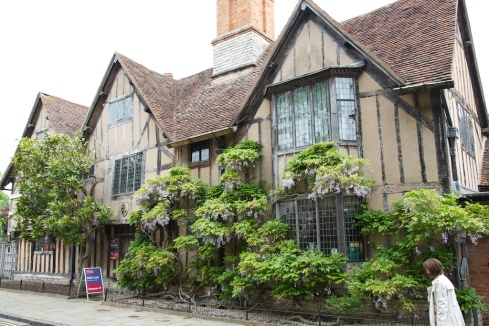
Hall’s Croft was owned by William Shakespeare’s daughter, Susanna Hall, and her husband Dr John Hall whom she married in 1607.

There has been an inn on this site since 1718 but the building dates back to 1594 and the site has apparently been occupied since the early fourteenth hundreds and possibly before,
First called ‘The Reindeer’ then ‘The Greyhound’ and briefly ‘The New Inn’ it became ‘The Garrick Inn’ around 1769 named after the famous actor David Garrick following a brief three day jubilee in Stratford organised by him.
Good victuals and the finest ales have been available all that time and Greene King is proud to continue this tradition.
So why not step inside and partake as many travellers have done before you.

Baddesley Clinton is a moated manor house, located just north of the historic town of Warwick in the English county of Warwickshire; the house was probably established sometime in the 13th century when large areas of the Forest of Arden were cleared and eventually converted to farmland. The site is a Scheduled Ancient Monument and the Hall is a Grade I listed building. http://en.wikipedia.org/wiki/Baddesley_Clinton

Baddesley Clinton courtyard.

Looking in over the moat.

Anne Hathaway’s Cottage.

The approach road to Kedleston Hall was about a mile long and ended soon after this Robert Adam designed bridge.

Kedleston Hall is an English country house in Derbyshire, approximately four miles north-west of Derby, and is the seat of the Curzon family whose name originates in Notre-Dame-de-Courson in Normandy. Today it is a National Trust property. http://en.wikipedia.org/wiki/Kedleston_Hall

The present house was commissioned by Sir Nathaniel Curzon (later 1st Baron Scarsdale) in 1759. The house was designed by the Palladian architects James Paine and Matthew Brettingham and was loosely based on an original plan by Andrea Palladio for the never-built Villa Mocenigo. At the time a relatively unknown architect, Robert Adam was designing some garden temples to enhance the landscape of the park; Curzon was so impressed with Adam’s designs, that Adam was quickly put in charge of the construction of the new mansion.

Everything in the house screams Robert Adam. We have seen several of his houses now and the guy was definitely OCD. In this house he doesn’t seem to have yet started designing the carpets to reflect the same motifs as the ceiling.

The rear façade of the house.

Terrace house streetscape in Batley, the town where Leanne’s Grandfather is recorded as being born.

Fountains Abbey is approximately three miles south west of Ripon in North Yorkshire, England, near to the village of Aldfield. Founded in 1132, the abbey operated for over 400 years, until 1539, when Henry VIII ordered the Dissolution of the Monasteries. It is one of the largest and best preserved ruined Cistercian monasteries in England. http://en.wikipedia.org/wiki/Fountains_Abbey

At the time of The Dissolution the roofs were all removed to render the buildings unusable and the lead was melted down and sold. All the black marble pillars were also removed.

The end frame once held a huge rose window.

The view back from the woodland pathway.

Again from the woodland pathway.

A small hamlet on the shores of Loch Lomond. There were about six houses and they were all decorated almost like gingerbread houses and with very nice gardens

Luss is a conservation village, with a bypass carrying the busy A82 trunk road. Many of Luss’ cottages have been described as picturesque. The village has a kiltmaker and a bagpipe works. In recent years, Luss became famous as a result of being the main outdoor location for the Scottish Television drama series Take the High Road. http://en.wikipedia.org/wiki/Luss

From the village of Luss on the shores of Loch Lomond looking across to the clouded Ben Lomond peak.

Looking back down the valley from the top of the ‘Rest & Be Thankful’ picnic spot. ‘Rest & Be Thankful’ are the words inscribed on a stone near the junction of the A83 and the B828, placed there by soldiers who built the original military road in 1753, now referred to as the Drovers’ road. The original stone fell into ruin and was replaced by a commemorative stone at the same site. http://en.wikipedia.org/wiki/A83_road

After descending from ‘Rest & Be Thankful’ to the shores of Loch Fyne we came to Inveraray.

Inveraray from the pier back towards town.

Ever since we left the built up areas around Glasgow we had been seeing rhododendrons along the roadsides and into the trees. At last we found a spot to stop for a photo where there were enough together in one place.

We stayed at a nice B&B along this road in Tarbert just 15 minutes from the Kennacraig ferry terminal that we needed to be at by 09h15 the next morning.

My first distillery visit was Caol Ila which is just around the corner from Port Askaig. Ten minutes drive at most. The photo shows the ferry we came on to Islay. Beyond the ferry is Jura, only a stone’s throw from Islay at this point.

This is the channel we sailed up to get to Port Askaig – on this side Islay and on the other side Jura.

Looking across the top of the Bunnahabhain Distillery cask warehouse to the sea.

Taken on the road to Bunnahabhain Distillery – bluebells, sea and Jura with peaks shrouded in cloud.

Somewhere along the road to Bunnahabhain. Jura on the right of the water.

At the top end of the town of Bowmore is the Round Church. The is the view from behind its graveyard out across the bay towards Port Charlotte. The tall stack close to the water is at Bowmore Distillery.

Looking back at Bowmore from the pier.

The view from Bowmore to Port Charlotte.

We stayed five nights at Portnahaven, right at the end of the western peninsula. It was delightful. This shows the west side of the little harbour which is very sheltered from the open sea by two islands only 500m off shore.

Portnahaven on Islay – the King Street or east side of the bay in the late sun.

Fishing boats moored at Portnahaven and Orsay Island. MacKenzie Island is just out of shot to the right.

Portnahaven Sunset, 22h07 on 15th June. Official setting time for this day is 22h12. It was still light enough to read outside at 23h00.

We found this tiny orchid on our coastline walk. Apparently they are rare.
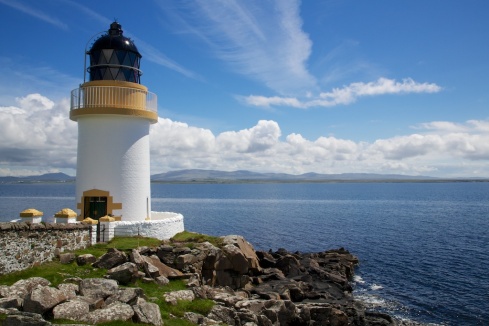
The lighthouse at Port Charlotte looking across to Bowmore.
Next post I will cover the main part of our trip to Islay and I might even do a special post with just the distillery and a few related photos. Until then…
Tags: Distillery, Ferry, Islay, National Trust, Sightseeing, Single Malt, Stratford On Avon, Travel, UK, Whisky




























